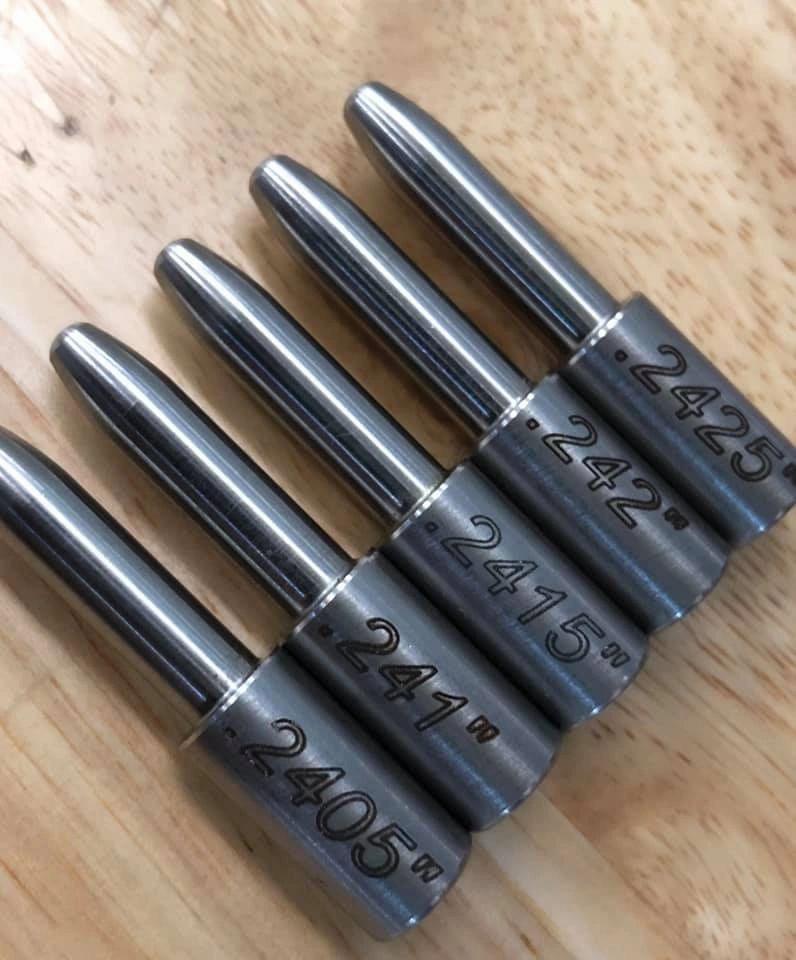milboltnut
Well-Known Member
I keep it down as much as possible."My" list just got longer!
Last edited:
 Help Support Long Range Hunting Forum
Help Support Long Range Hunting Forum
I keep it down as much as possible."My" list just got longer!
sounds like the IDOD turning machine can solve any runout, whether a bushing or mandrel is used. After I neck turn the neck thickness is the same after I mandrel size.
Brother, it is time to update your list.Actually an IDOD doesn't work well at all with case run out on new brass. It's quite the chore to get some new brass straight so the IDOD will cut the neck consistently.
Here are a couple pics describing what I'm talking about.....You can see the unturned parts of the neck (inside also) due to not being concentric with the cutting tools. This is easily fixed by turning fired brass or using the CNC cut case holders.
View attachment 344438
View attachment 344439
Seems odd you would bring up an IDOD after belly aching about the costs of other reloading equipment.
Apologies to the OP for all the off topic posts.
wilson mandrels are .002 under. Is that the same as other manufacturers?I use both bushing and mandrels….3 thou under with bushings, 2 thou under with a mandrel.
Std. K&M and Sinclair I have is .001 undersize minus any spring back. My .284 it is .0015 undersize on i.d. after mandrel. That can be changed with special u/s mandrels.wilson mandrels are .002 under. Is that the same as other manufacturers?
I'm loading mostly for my 6 & 6.5 CM AR10 auto loaders . The BCG is pretty rough on brass so I'm going to set the same. 0025 neck tension then apply a light crimp with a Lee factory crimp die.Std. K&M and Sinclair I have is .001 undersize minus any spring back. My .284 it is .0015 undersize on i.d. after mandrel. That can be changed with special u/s mandrels.
Yes, just ran a test on my 7RM. Crimping 1/8 turn with Lee FCD on a 180 Berger cut my ES way down. It's worth a try for the low cost of the die.I'm loading mostly for my 6 & 6.5 CM AR10 auto loaders . The BCG is pretty rough on brass so I'm going to set the same. 0025 neck tension then apply a light crimp with a Lee factory crimp die.
Members on LRH have said in most cases it shrinks ES and group sizes.
Safety indicates a neck crimp helps to not shove the bullet further into the case when the boltface shoves the next round into the chamber. So far best groups are under 3/8" for 87 gr vmax and 5/8" for 103 gr hornady eld-x in my 6CM
so by 1/8 of a turn, you're saying you put the loaded round in the shell holder then pull the handle all the down to the bottom of the stroke, then adjust the die down until it touches the bullet. raise the ram/lowering the case then adjust the die down 1/8 of a turn...and then lower the ram/ raise the case thereby crimping the neck slightly...is this correct?Yes, just ran a test on my 7RM. Crimping 1/8 turn with Lee FCD on a 180 Berger cut my ES way down. It's worth a try for the low cost of the die.
LE WIlson makes the "new" mandrels that are designed to be used on new brass and come in the one spec size. Sinclairs and several others have mandrels that pair with the neck turning sets, generally speaking an expander is 0.001" larger than the turning mandrel to expand the neck then allow it to ride on the turning mandrel.wilson mandrels are .002 under. Is that the same as other manufacturers?

@ButterBean wrote down a good process that involves zeroing and indexing the ring to make this easier. I use Steps 1-3 with all my FCDs even if not using Hammers, it turns these $15 dies into repeatable, consistent tools.so by 1/8 of a turn, you're saying you put the loaded round in the shell holder then pull the handle all the down to the bottom of the stroke, then adjust the die down until it touches the bullet. raise the ram/lowering the case then adjust the die down 1/8 of a turn...and then lower the ram/ raise the case thereby crimping the neck slightly...is this correct?
Best Explanation & Reason I've and about brass Spring I've heard. That should help him out.Shawn
When we pull a expander Ball back through the neck to set the final neck neck diameter we stretch the neck and introduce more runout.
We have learned that a Mandrel pushed into the neck does not stretch the neck and introduces much less runout.
The reason we use a Mandrel to expand the neck instead of relying on the neck bushing is because brass resists the last direction we move it in. Plus the Mandrel pushes the imperfections to the outside of the neck causing more consistent neck tension.
Yup. I just get the bullet to where I can no longer shake it in the collet by adjusting down, then adjust 1/8 turn further down as you described with ram position.so by 1/8 of a turn, you're saying you put the loaded round in the shell holder then pull the handle all the down to the bottom of the stroke, then adjust the die down until it touches the bullet. raise the ram/lowering the case then adjust the die down 1/8 of a turn...and then lower the ram/ raise the case thereby crimping the neck slightly...is this correct?